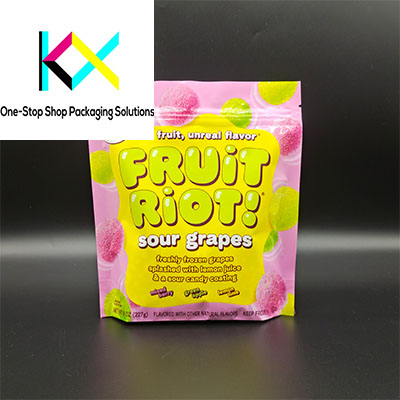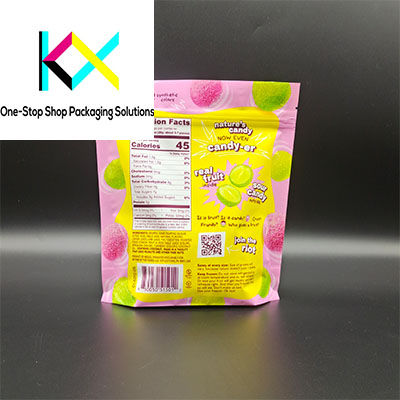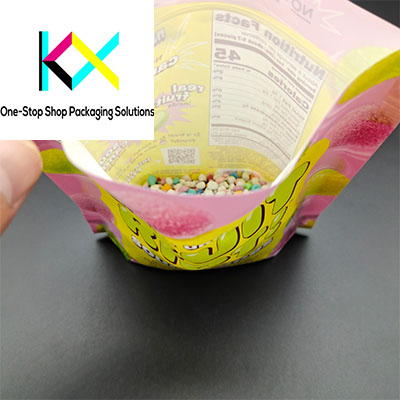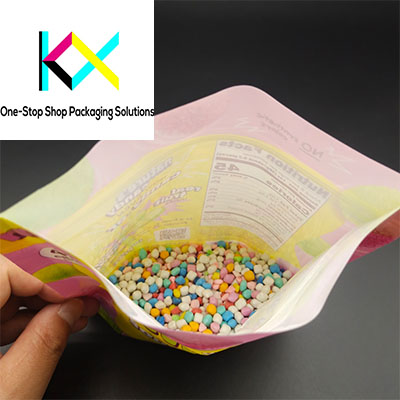How Pressure Seal Bags Protect Your Products
In an era where product integrity and contamination prevention are paramount, Pressure Seal Bags have emerged as a fundamental packaging solution across multiple industries. These specialized containers utilize precisely engineered adhesion technology to create immediate, secure closures without requiring heat or specialized equipment. The unique construction of Pressure Seal Bags allows for rapid packaging operations while maintaining consistent seal integrity, making them particularly valuable in applications where speed, efficiency, and reliability are critical. From medical specimen containment to food service applications, the versatility of Pressure Seal Bags continues to expand, driven by technological advancements and evolving industry requirements for secure, user-friendly packaging solutions.


The Convenience Revolution: Understanding Recloseable Pouches
While Pressure Seal Bags excel in providing initial security, Recloseable Pouches offer ongoing protection through multiple access cycles. These innovative packages have transformed from simple bag-and-zipper combinations to sophisticated systems that maintain product freshness and prevent contamination through numerous openings and closings. Modern Recloseable Pouches incorporate advanced closure mechanisms that provide audible and tactile confirmation of proper sealing, along with enhanced barrier materials that protect contents from environmental factors. The evolution of these pouches reflects growing consumer demand for packaging that not only protects products during storage and distribution but also maintains that protection throughout the product’s usage lifecycle.

Material Innovations: Enhancing Performance and Sustainability
Recent developments in material science have significantly improved both packaging formats. For Pressure Seal Bags, innovations include specialized adhesive systems that provide stronger initial bonds while allowing easy opening when required, and films with enhanced barrier properties that protect against moisture, gases, and contaminants. The industry is also making strides in sustainable options, with developments in recyclable materials and adhesive systems that don’t interfere with recycling processes. Similarly, Recloseable Pouches are benefiting from material advancements including more durable closure tracks that withstand repeated use, clearer films for better product visibility, and sustainable options incorporating post-consumer recycled content while maintaining performance standards.

Manufacturing Efficiency and Automation Compatibility
The production and filling processes for both packaging types have evolved to meet modern manufacturing demands. Pressure Seal Bags are particularly valued in high-speed automated environments where their ability to be sealed quickly without additional equipment significantly increases packaging line efficiency. Recent improvements in web feeding systems and registration controls have enhanced the reliability of these operations. For Recloseable Pouches, manufacturing advancements focus on precision in closure application and improved seal integrity where the closure meets the bag material. Both packaging formats continue to evolve toward greater compatibility with automated filling systems, with developments in bag presentation, opening reliability, and sealing consistency.

User Experience and Accessibility Features
The human interaction aspect represents a crucial area of innovation for both packaging types. Pressure Seal Bags have incorporated features such as tear notches for easy opening, writeable surfaces for labeling, and tinted areas for content privacy. Designs increasingly consider the end-user’s needs, with attention to opening force requirements and tactile feedback. For Recloseable Pouches, user-centric innovations include easier grip surfaces for opening, visual indicators showing proper closure engagement, and designs that facilitate complete product removal. Both packaging formats are evolving to accommodate users with varying physical abilities, ensuring accessibility while maintaining security and protection.
Sustainability and Circular Economy Considerations
Environmental responsibility has become a driving force in packaging development, affecting both categories significantly. Manufacturers of Pressure Seal Bags are addressing sustainability through reduced material usage, development of recyclable material structures, and adhesive systems that don’t contaminate recycling streams. The industry is also exploring compostable options for appropriate applications. For Recloseable Pouches, sustainability efforts focus on mono-material constructions that enhance recyclability, reduced plastic usage through thinner gauges, and designs that facilitate proper disposal. Both packaging types are increasingly evaluated through life-cycle assessment methodologies, considering not just the packaging itself but also its role in preventing product waste.
Industry-Specific Applications and Customization
The versatility of both packaging formats allows for extensive customization to meet specific industry requirements. Pressure Seal Bags serve critical roles in healthcare for specimen transport, in food service for portion control, and in electronics for static-sensitive component protection. Customization options include specialized sizes, tamper-evident features, and unique barrier requirements. Recloseable Pouches have found applications across consumer goods, from food products to hardware items, with customization focusing on closure types, transparency levels, and printing capabilities. The ability to tailor both packaging types to specific product needs has been key to their expanding adoption across diverse market segments.
Future Directions: Smart Features and Enhanced Functionality
The trajectory for both packaging categories points toward greater integration of technology and intelligence. Future Pressure Seal Bags may incorporate indicators that confirm proper sealing or change color if contamination occurs. Smart adhesives that respond to specific stimuli for easier opening represent another development avenue. For Recloseable Pouches, emerging innovations include closure systems with integrated freshness indicators, smart labels that track opening history, and materials that actively extend product shelf life. The convergence of traditional packaging with digital technology will likely yield solutions that provide both physical protection and valuable data throughout the product lifecycle.
Conclusion: The Complementary Roles of Secure Packaging Solutions
The continued evolution of Pressure Seal Bags and Recloseable Pouches demonstrates the packaging industry’s ability to develop specialized solutions for different stages of product protection and usage. While serving distinct primary functions—one providing immediate, secure closure and the other offering repeated access—both packaging formats share common goals of product protection, user convenience, and environmental responsibility. As market needs continue to evolve and new challenges emerge, both Pressure Seal Bags and Recloseable Pouches will continue to adapt, incorporating new materials, technologies, and design approaches to meet the changing demands of manufacturers, retailers, and consumers. Through ongoing innovation and attention to both performance and sustainability, these packaging solutions will maintain their important roles in product protection and presentation across diverse market segments.
You can visit our website to know more about our flexible packaging pouch:
